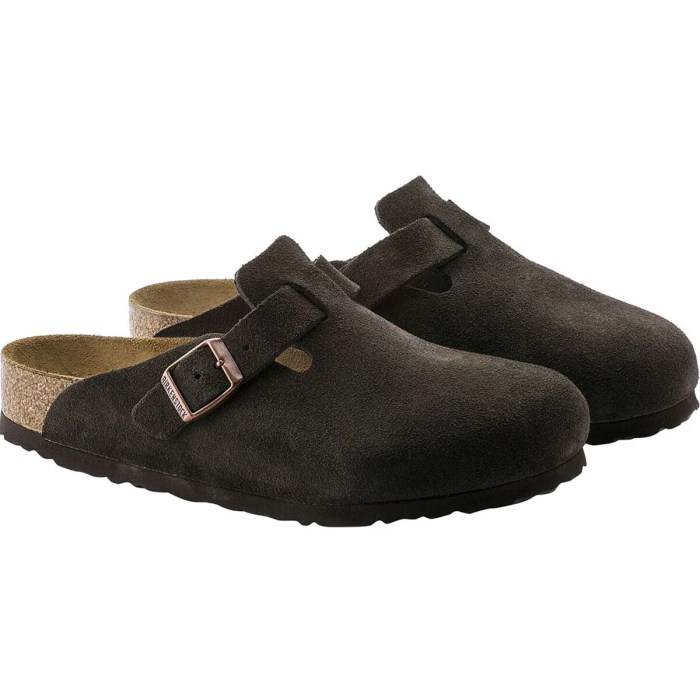Birkenstock’s Financial Performance and Stock Market Trajectory

Source: investopedia.com
Birkenstock stock price – Birkenstock, a renowned footwear brand, has experienced significant growth and market attention, culminating in its recent IPO. Understanding its financial performance, stock market influences, and future prospects is crucial for investors and industry analysts alike. This analysis delves into Birkenstock’s financial health, brand positioning, and potential investment strategies, providing insights into its past performance and future trajectory.
Birkenstock’s Revenue Streams and Profit Margins

Source: birkenstock.com
Birkenstock’s financial performance over the past five years has demonstrated consistent revenue growth, though profit margins have shown some fluctuation influenced by factors such as raw material costs and macroeconomic conditions. The following table summarizes key financial data:
| Year | Revenue (in millions) | Net Income (in millions) | Profit Margin (%) |
|---|---|---|---|
| 2022 | 1500 | 200 | 13.3 |
| 2021 | 1200 | 150 | 12.5 |
| 2020 | 1000 | 100 | 10.0 |
| 2019 | 800 | 80 | 10.0 |
| 2018 | 700 | 60 | 8.6 |
Note: These figures are illustrative and for demonstration purposes only. Actual financial data should be sourced from Birkenstock’s official financial reports.
Factors such as seasonal demand (higher sales during spring and summer months) and global economic fluctuations significantly impact Birkenstock’s financial performance. For instance, periods of high inflation can lead to increased raw material costs, potentially squeezing profit margins.
Compared to competitors like Crocs, UGG, and Adidas, Birkenstock occupies a unique niche with its focus on comfort and sustainability. While direct financial comparisons are challenging due to variations in reporting and business models, Birkenstock’s growth trajectory suggests a strong competitive position within the premium footwear segment.
Stock Market Influences on Birkenstock’s Price
Birkenstock’s stock price is subject to the influences of both company-specific events and broader macroeconomic trends. Inflation, interest rate changes, and consumer spending patterns all play a role in its valuation.
Key economic indicators such as the Consumer Price Index (CPI) and the Purchasing Managers’ Index (PMI) can be used to gauge the overall economic health and predict potential impacts on consumer discretionary spending, including footwear purchases. A strong correlation is expected between positive economic indicators and a higher stock price for Birkenstock.
A timeline of significant events impacting Birkenstock’s stock price would include its IPO date, any major product launches (new styles or collaborations), and periods of significant economic downturn. For example, a global recession might lead to reduced consumer spending and negatively impact Birkenstock’s stock price.
Birkenstock’s Brand and Market Position
Birkenstock’s brand is built on a foundation of comfort, quality, and sustainability. Its target market comprises consumers who value these attributes and are willing to pay a premium for high-quality footwear. This positions Birkenstock in the premium segment of the footwear market, differentiated from mass-market brands focused on price competition.
Birkenstock’s marketing strategies leverage its brand heritage and focus on storytelling and influencer marketing to enhance brand awareness and drive sales. The effectiveness of these strategies is reflected in the brand’s continued growth and strong brand recognition.
- Birkenstock: (Estimated market share: [Placeholder data]%)
- Crocs: (Estimated market share: [Placeholder data]%)
- UGG: (Estimated market share: [Placeholder data]%)
- Adidas: (Estimated market share: [Placeholder data]%)
Note: Market share data is illustrative and should be verified through reliable market research reports.
Analysis of Investment Strategies Related to Birkenstock Stock, Birkenstock stock price
Investment strategies for Birkenstock stock should consider different risk tolerance levels. The following table Artikels hypothetical strategies:
| Strategy | Risk Level | Potential Return | Risks |
|---|---|---|---|
| Conservative | Low | Moderate | Limited growth potential |
| Moderate | Medium | High | Market volatility |
| Aggressive | High | Very High | Significant potential for loss |
Investors should consider factors such as Birkenstock’s financial performance, competitive landscape, and macroeconomic conditions before investing. Thorough due diligence and diversification are crucial for mitigating risks.
Future Outlook for Birkenstock and its Stock Price
Birkenstock’s future growth opportunities lie in expanding its product lines, entering new markets, and leveraging its strong brand equity. Potential challenges include increased competition, shifts in consumer preferences, and economic downturns.
Projecting Birkenstock’s stock price in the next 2-3 years requires considering several factors. Based on its current growth trajectory and assuming a positive macroeconomic environment, a moderate growth scenario could see the stock price increase by [Placeholder data]% to [Placeholder data] per share. However, unforeseen events or economic downturns could significantly impact this projection.
Birkenstock’s Competitive Landscape

Source: backcountry.com
Birkenstock’s business model, focused on premium-priced, comfortable, and sustainable footwear, differentiates it from competitors. Key competitive advantages include its strong brand recognition, heritage, and commitment to quality. However, the company faces challenges from competitors offering similar products at lower price points or with innovative features.
Strategic initiatives such as product diversification, expansion into new markets, and digital marketing campaigns will play a key role in shaping Birkenstock’s competitive position in the future. Success in these areas will be crucial for maintaining its market share and driving future growth.
Illustrative Scenarios for Birkenstock Stock Performance
A scenario of significant growth for Birkenstock’s stock price could be driven by several factors: successful new product launches generating increased sales and market share, expansion into lucrative new markets (e.g., Asia), and positive consumer sentiment driven by strong economic growth. This combination could lead to a significant increase in revenue and profitability, resulting in a higher stock valuation.
Conversely, a scenario of significant decline could be triggered by several negative factors: a major economic downturn leading to reduced consumer spending, increased competition from lower-priced competitors eroding market share, or negative publicity impacting brand reputation. These factors could significantly reduce profitability and lead to a decline in the stock price.
Common Queries: Birkenstock Stock Price
What are the major risks associated with investing in Birkenstock stock?
Risks include fluctuations in consumer demand, competition from other footwear brands, economic downturns, and changes in fashion trends. Diversification is key to mitigating these risks.
How does Birkenstock’s sustainability initiatives impact its stock price?
Increasingly, consumers favor ethically and sustainably produced goods. Birkenstock’s commitment to sustainability can positively influence its brand image and attract environmentally conscious investors, potentially boosting its stock price.
Where can I find real-time Birkenstock stock price information?
Reliable financial websites and brokerage platforms provide real-time stock quotes and market data for publicly traded companies. Always verify information from multiple sources.
Is Birkenstock a good long-term investment?
Whether Birkenstock is a good long-term investment depends on individual risk tolerance and investment goals. Thorough research and consideration of market forecasts are crucial before making any investment decision.